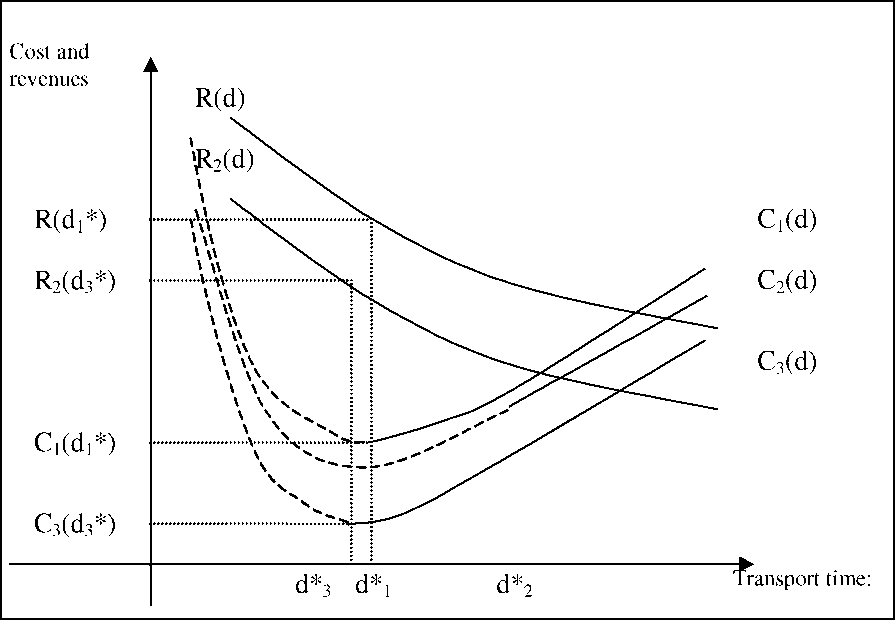European Regional Science Association ___________________________________________________ August, 2003
differences between the two itineraries, like duration difference but also distance
difference, meaning that only part of this willingness to pay is value of time. To obtain
the willingness to pay for time savings, one needs to isolate the time based effect from
other effects. But this light complication can be omitted here for simplification purpose.
The important point here is that the willingness to pay elicited in itinerary choice
gives no indication on the actual benefits that hauliers would get from a shift in the
infrastructure endowment. This is illustrated in the following graph where a new cost
function C3 appears and the revenue function can be shifted to a new position R2. As
can be seen on this representation, the shift in revenue curve can make the benefits of
the haulier (R2(d3*) - C3(d3*)) unchanged compared with (R(d1*) - C1(d1*)) if this shift
is equal to the difference in cost. The conclusion here is that, unless very specific and
unlikely hypotheses are made, the willingness to pay of the haulier in the context of a
new infrastructure, will be different from the willingness to pay for itinerary choice.
Figure 6 : willingness to pay and hauliers profit for changed infrastructure
endowment.

15
More intriguing information
1. Behaviour-based Knowledge Systems: An Epigenetic Path from Behaviour to Knowledge2. The geography of collaborative knowledge production: entropy techniques and results for the European Union
3. Beyond Networks? A brief response to ‘Which networks matter in education governance?’
4. The name is absent
5. The name is absent
6. Credit Market Competition and Capital Regulation
7. Shifting Identities and Blurring Boundaries: The Emergence of Third Space Professionals in UK Higher Education
8. Towards Teaching a Robot to Count Objects
9. Geography, Health, and Demo-Economic Development
10. Survey of Literature on Covered and Uncovered Interest Parities